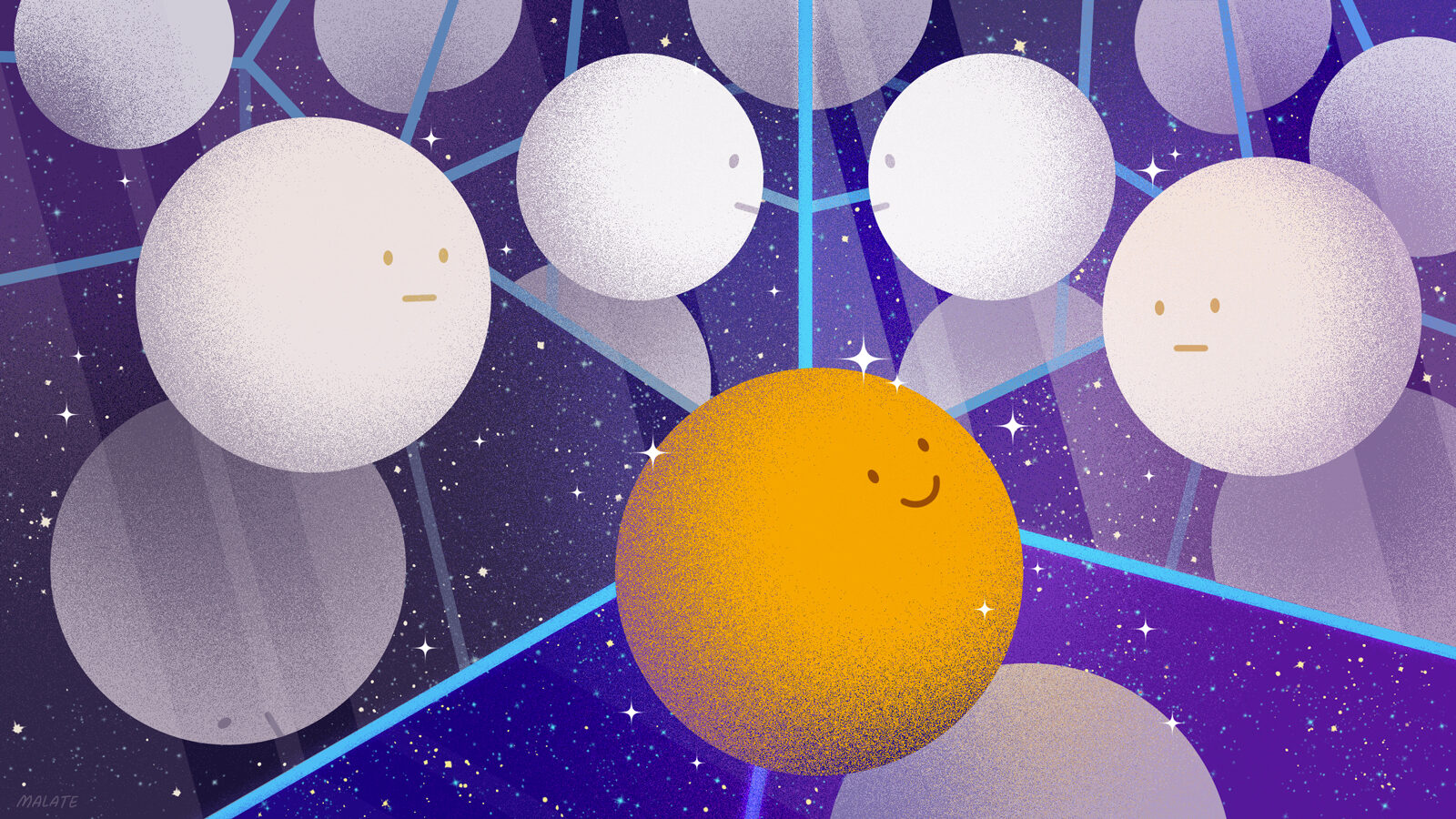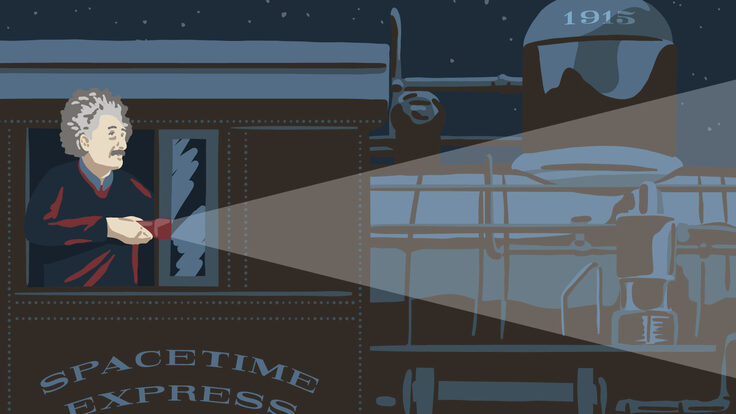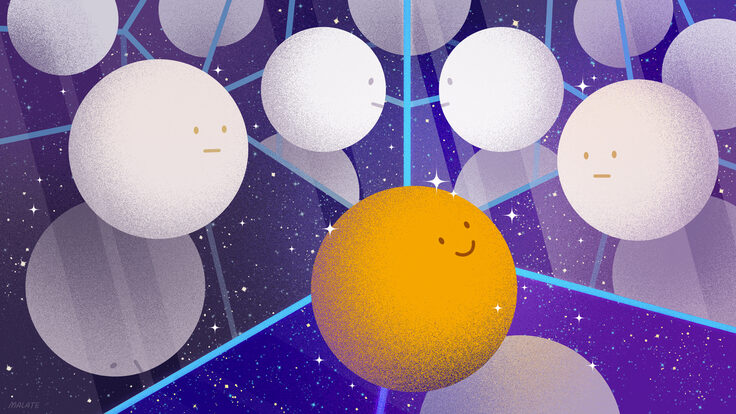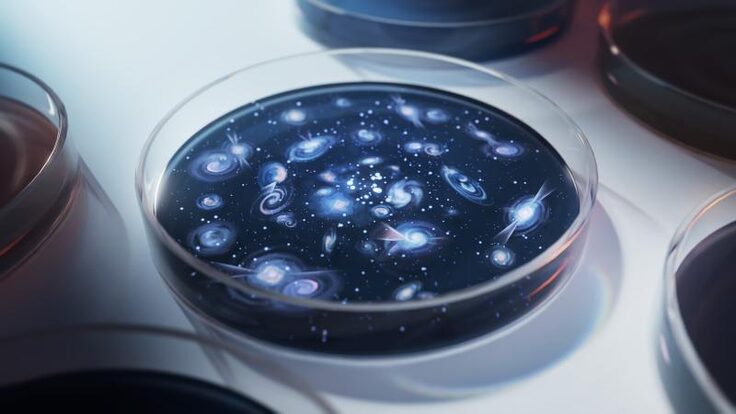The Higgs field is famous for its role bestowing mass on other particles. But it isn’t a one-way relationship: The Higgs field’s interactions also influence its own particle, the Higgs boson. Due to this give-and-take, some physicists think the Higgs boson should be approximately as heavy as the biggest mass scale with which it interacts, the Planck scale.
But this isn’t the case. The Planck scale sits at the enormous energies at which it is thought that gravity becomes as strong as the other three fundamental forces, around 10^19 gigaelectronvolts. This is many orders of magnitude bigger than the actual Higgs mass of 125 GeV.
How can the gap between expectation and reality be so huge? Is something protecting the Higgs from Planck-scale physics? The large, unexpected difference in these two scales is known as the hierarchy problem.
Over the last several decades, physicists have presented many theories to resolve the hierarchy problem, from supersymmetry to warped extra dimensions to imagining the Higgs as a composite particle. However, at the Large Hadron Collider at CERN, where the Higgs boson was discovered in 2012, attempts to find evidence in support of these theories have come up short.
During the ongoing planning process for the US high-energy physics community, physicists have discussed another way to explain the mass of the Higgs: with a class of theories known as “neutral naturalness.”
When it comes to solving the hierarchy problem, neutral naturalness is “one of the few ideas out there that is still viable,” says Zackaria Chacko, a professor of physics at the University of Maryland and one of the inventors of this framework.
Some scientists say neutral naturalness could be the missing piece that accounts for the deficiencies of the supersymmetry or composite-Higgs theories. Importantly to forward-looking physicists, experiments at the LHC and other planned future experiments all have the capability to put the theory to the test.
A colorful problem
Some of the proposed solutions to the hierarchy problem require the existence of hypothetical partner particles with masses not far above the mass of the heaviest Standard Model particle, the top quark. These particles could “protect” the Higgs mass from the influence of high-energy scales.
According to theories such as supersymmetry, some of these partner particles should carry something called the “color charge.” What electrical charge is to the electromagnetic force, color charge is to the strong nuclear force. Just as the electromagnetic force acts on electrically charged particles like electrons, the strong nuclear force acts on color-charged particles like quarks. Where electrically charged particles are described as positive or negative, color-charged particles are described as red, green or blue—or, for antiparticles—antired, antigreen or antiblue.
If a theory like supersymmetry were the solution to the hierarchy problem, scientists expected to have seen evidence of partner particles with quark-like color charges in the LHC data by now. And they haven’t. If the partner particles do exist in some form, they must have masses high enough that the LHC is incapable of producing them.
With this in mind, Chacko and his collaborators came up with a new theory, one with partner particles that are color neutral. Thus, neutral naturalness was born.
It would be extremely difficult for physicists to detect these proposed color-neutral partner particles directly. “When you’re colliding protons, you are colliding particles that interact with the strong nuclear force,” says Brian Batell, an associate professor of physics and astronomy at the University of Pittsburgh. “Because [the partner particles] are neutral, when we do the LHC experiments, we just won’t produce them in any great abundance because they don’t couple to the strong nuclear force. Also, if they don’t couple to the other forces of the Standard Model, they may not show up in precision measurements.”
The first proposed explanation for this was that the neutral particles may just exist in a different, hidden part of our universe.
Searching for neutral naturalness
In 2005, Chacko and two colleagues, Hock-Seng Goh and Roni Harnik, published the first paper on neutral naturalness—though it didn’t yet have that name. They called the model they introduced “twin Higgs.”
The twin-Higgs model postulates a hidden sector, or “mirror world,” that is almost identical to our own. Like our world, the proposed mirror world would have twin versions of all the particles and forces of the Standard Model, including a Higgs boson. This twin Higgs would be coupled to our universe via our Higgs boson, creating the only bridge between our world and the mirror sector. Unlike in our universe, particles and fields in the mirror world would carry no charge under the Standard Model. Therefore, interactions in the mirror world could not be directly observed by the LHC.
But if we can’t see particles that would evince the mirror world, how can we test neutral naturalness? Indirectly, by looking for phenomena that neutral naturalness models predict.
The twin-Higgs model, for example, forecasts tiny deviations in Higgs properties.
“One of the main objectives of the LHC—and also some future colliders being considered—is to really test the properties of the Higgs boson very precisely,” Batell says. “We want to measure all of its couplings to other Standard Model particles with as much precision as we can. If we do that, the hope is that maybe some deviation pops up and that could be a sign of neutral naturalness or other kinds of beyond-the-Standard-Model theories.”
If the mirror world is more complicated than the original model predicts, another possibility is that the Higgs-born mirror particles could decay back into detectable Standard Model particles. The experimental signals would show a Higgs boson being produced and decaying invisibly, and then, farther away in the detector, multiple particles would suddenly appear. The hunt for these so-called “long-lived particles” is already an active area of research at the LHC.
There are several models of neutral naturalness that make different predictions. The “quirky little Higgs” and “folded supersymmetry” models, for example, are fundamentally different than the twin-Higgs model and don’t involve a mirror world. Instead, they predict new particles that, while neutral under the strong nuclear force, are charged under the electromagnetic force.
Batell is not making any bets on which model of neutral naturalness is most likely to be correct. “I’m very driven by what data we have,” he says. “Until we see these particles somehow, then I’m going to keep an open mind.”
There are drawbacks to models of neutral naturalness, aside from the need to test them indirectly. Technically, neutral naturalness is not a complete solution to the hierarchy problem. It mainly addresses the “little hierarchy problem” of the Higgs mass being weirdly below the highest energy scales being probed by the LHC—as opposed to the more significant problem of the Higgs mass being even farther from the Planck scale.
Neutral naturalness models can be embedded in supersymmetry or composite-Higgs theories to solve the big hierarchy problem. However, the color-charged particles predicted by these theories are expected to be out of reach for the LHC. “This is why the neutral naturalness framework is one of the targets for any future collider program,” says Chacko.
Neutral naturalness could address other puzzles in particle physics and cosmology. Chacko says the twin-Higgs model may be able to resolve the sigma-8 problem, which is related to the distribution of matter in the universe, and may also play a role in the solution to the Hubble tension, related to how quickly the universe is expanding.
The mirror world of some neutral naturalness models could also harbor other unseen components of our universe. Some theories related to dark matter and dark energy also postulate a hidden sector, which they call the “dark sector.” Neutral naturalness “provides a more top-down motivation for the idea of a dark sector,” Batell says. “You already see there’s a bunch of new particles and a bunch of new forces [in the mirror world], and maybe dark matter is part of that sector.”
Whether nature matches the predictions of neutral naturalness remains to be seen. For now, the theory provides physicists motivation to search for hidden particles and new physics.
“For me, these models are a way of exploring what the possibilities are, even at these lower scales that we’ve been maybe not thinking as much about because we have been spending so much time thinking about these other big paradigms,” says Chris Verhaaren, an assistant professor of physics and astronomy at Brigham Young University, who wrote a white paper about neutral naturalness with Batell and others. “We are learning when we say, ‘Let’s look in a new way that no one’s ever looked before.’ And then if we don’t find anything, we still have now learned something very new.”













